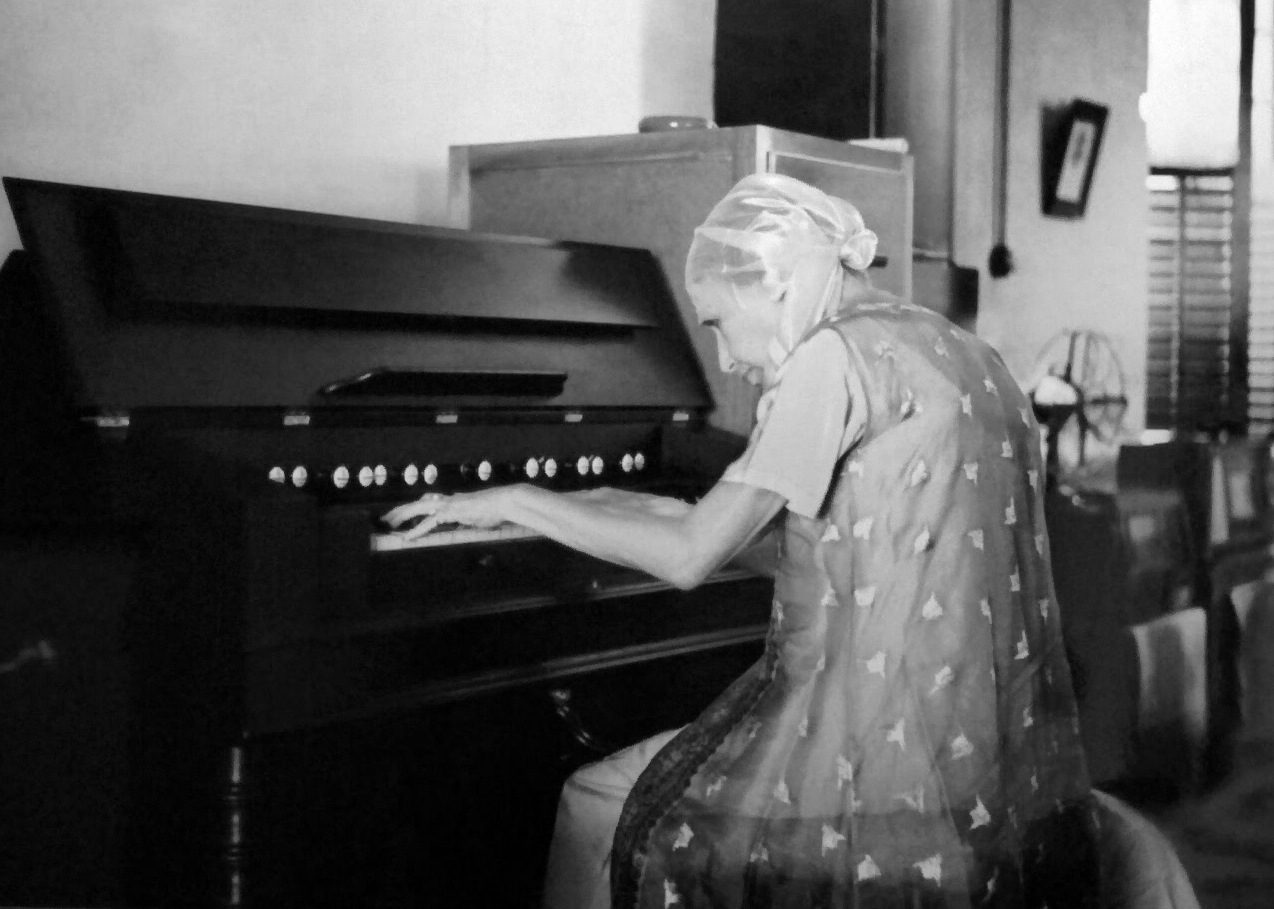

Sri Aurobindo
Sri Aurobindo
Sri Aurobindo
Sri Aurobindo
Sri Aurobindo
Sri Aurobindo
Sri Aurobindo
Sri Aurobindo
Sri Aurobindo
Sri Aurobindo
Sri Aurobindo
Sri Aurobindo
Sitar recital by Ustad Shahid Parvez with Pandit Anindo Chatterjee on the tabla
Homage by Shrimati Sukti Shubhra Pradhan
Homage by Pandit Anindo Chatterjee
Tribute by students and teachers - Floral Rangoli, Flower Arrangement
Inter-School Art Competition
Cultural program
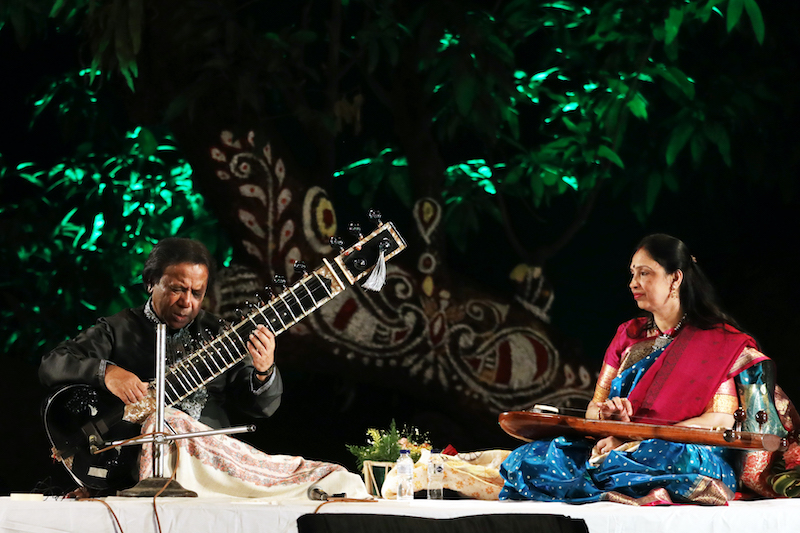
2.Feb.2024: Tribute to Joya di on her 88th Birth Anniversary
Sitar recital by Ustad Shahid Parvez with Pandit Anindo Chatterjee on the tabla and Srabani Biswas on the Tanpura
July 29, 2023 : An Esraj Concert was organised by Sri Aurobindo Institute of Culture Kolkata at Sri Aurobindo Nilaya, Santiniketan
August 6, 2023 : Sri Aurobindo Nilaya, Santiniketan in association with Sri Aurobindo Institute of Culture, Kolkata, presented 'Meghmandra' - Celebration of Monsoon Season. The programme was conducted by "Dinantika Shilpigosthi"
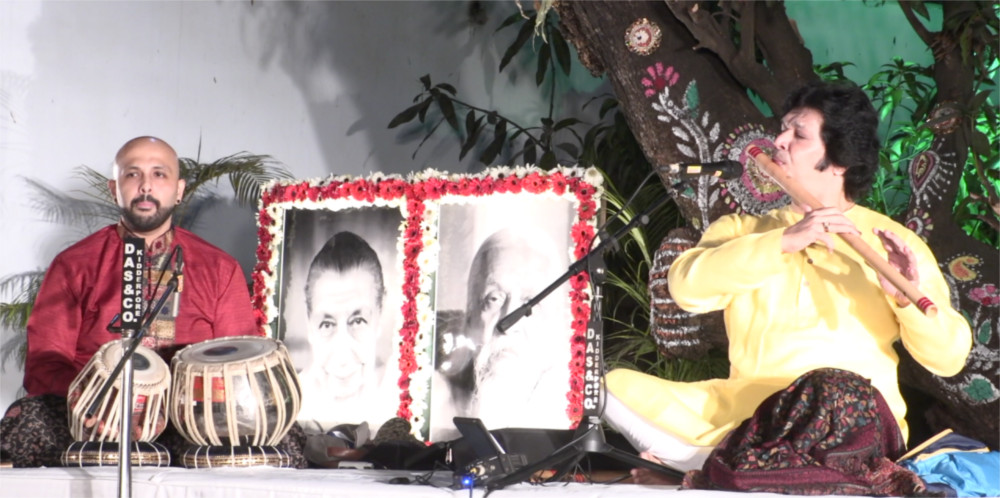
2.Feb.2023: Tribute to Joya di on her 87th Birth Anniversary
Anubrata Chatterjee on Tabla
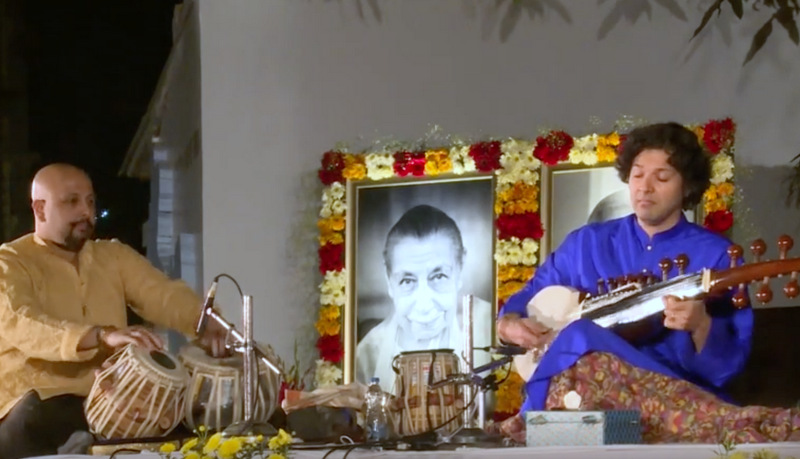
2.Feb.2020: Tribute to Joya di on her 84th Birth Anniversary
Anubrata Chatterjee on Tabla
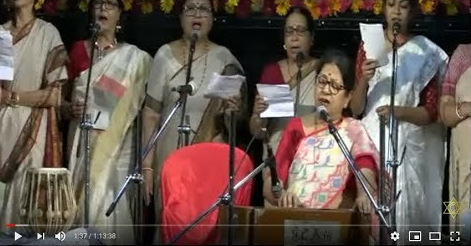
21.Aug.2019: Tribute to Shri Dwijendra Lal Roy and Shri Rajanikanto Sen
Offering of Songs led by Swastika Mukhopadhyay
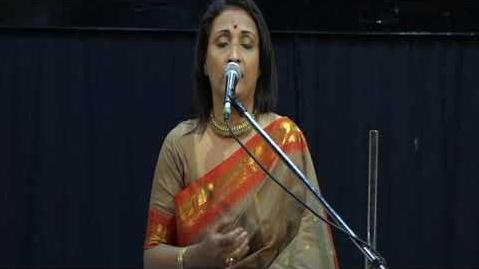
Recitation by Samiul Islam Poluck
Dance Drama - 'Ghare Phera'
Baul Songs by Satyananda Baul
Annual Programme - Arun Nursery, Shakti Centre and The Future Foundation School
Vocal Recital by Smt. Shreya Guha Thakurta
All Bengal Memorial Competitions
Inauguration of Annual Art Exhibition
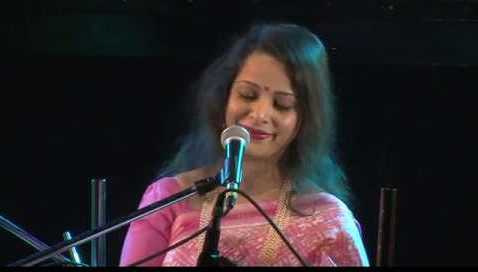
21.Dec.2018: Musical Program at Aspiration 2018 - annual celebration of culture
Offering of Songs by Shreya Guha Thakurta and Recitation by Saswati Sarkar
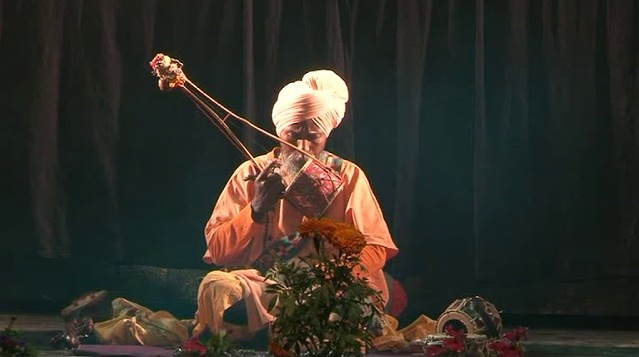
16.Dec.2018: Musical Program at Aspiration 2018 - annual celebration of culture
Offering of Baul Songs by Satyananda Das Baul
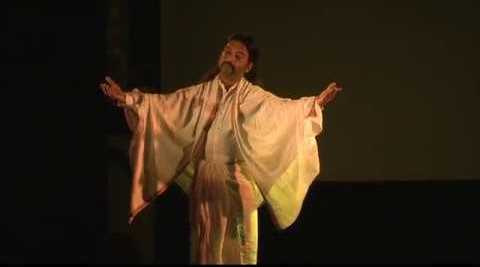
13.Dec.2018: Dance-drama at Aspiration 2018 - annual celebration of culture
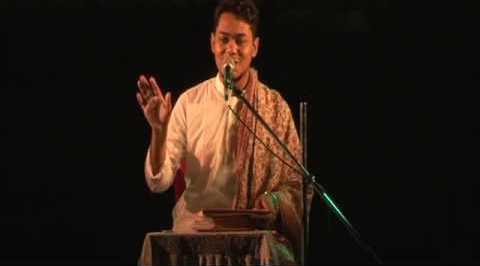
13.Dec.2018: Poetry recitation at Aspiration 2018 - annual celebration of culture
Poetry by Samiul Islam Poluck
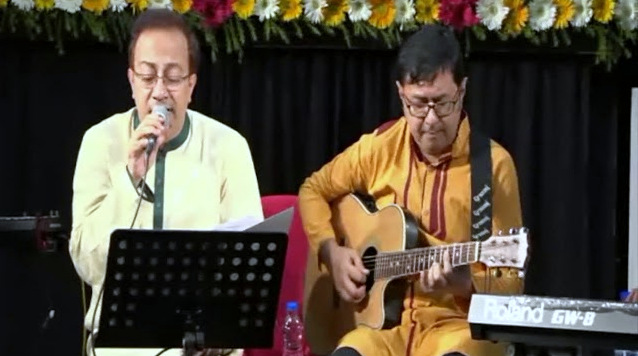
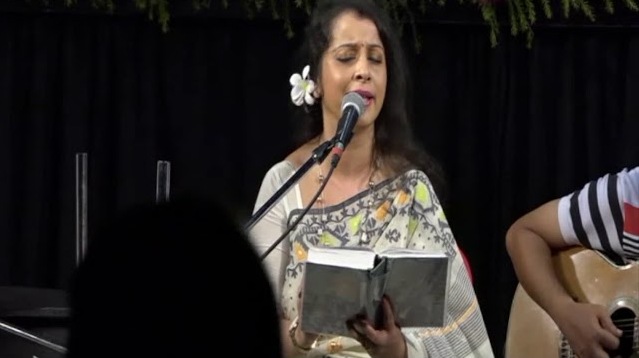
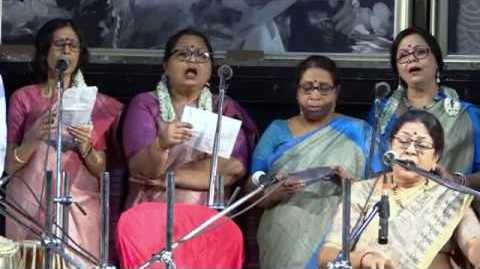
2.Aug.2018: Tribute to Shri Dwijendra Lal Roy
Offering of Songs led by Swastika Mukhopadhyay
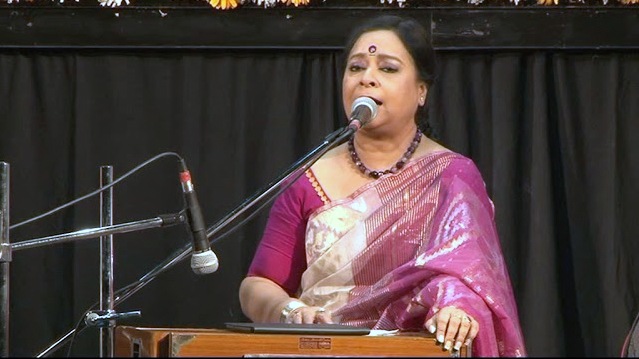
15.Apr.2018: Offering of songs on New Year's Day in the Bengali calendar
Offering of songs to celebrate New Year's Day in the Bengali calendar
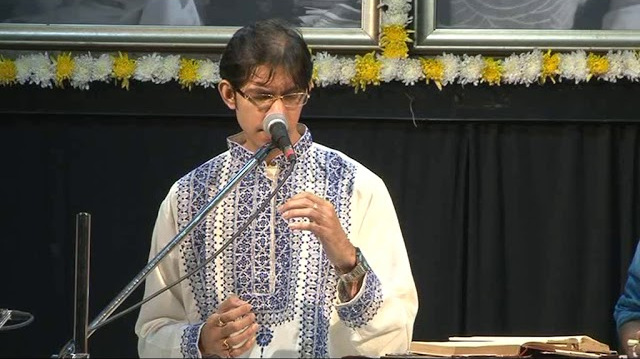
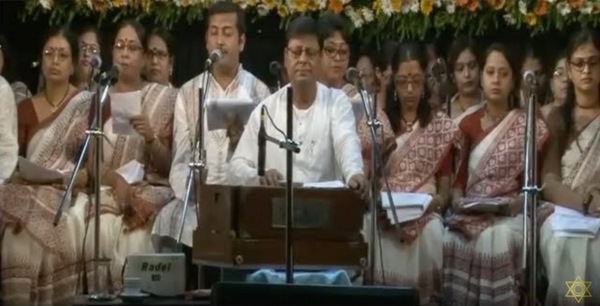
15.Aug.2017: Offering of Patriotic and Devotional songs on Sri Aurobindo's Birthday
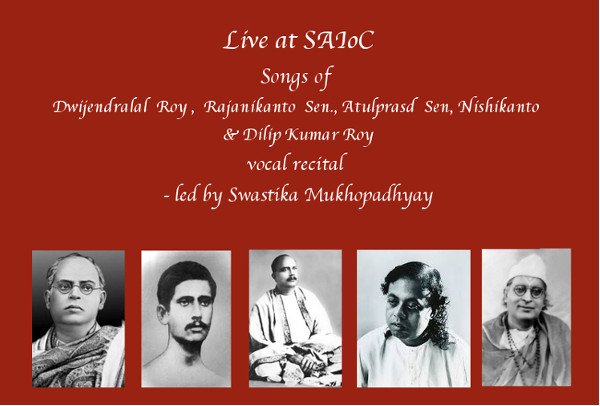
2.Aug.2017: Tribute to Atulprasad Sen, Rajanikanto Sen, D L Roy, Dilip Kumar Roy and Kobi Nishikanto
Offering of Songs led by Swastika Mukhopadhyay
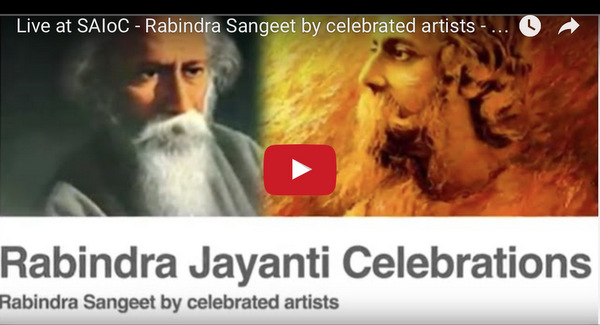
9.May.2017: Musical Tribute to Rabindranath Tagore on his Birth Anniversary by various artists
Sri Aurobindo Institute of Culture celebrated Rabindranath Tagore's Birth Anniversary with an offering of Rabindra Sangeet by various artists. Chorus led by Shri Ashish Bhattacharya and Smt. Pramita Mullick. Solo renditions by Priyangi Lahiri, Shreya Guhathakurta, Sounak Chattopadhyay, Aditi Gupta, Tanjina Toma, Alok Roy Chowdhury and Aniruddha Singha...
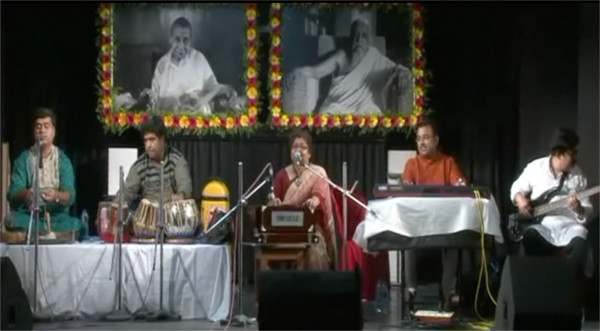
15.Apr.2017: Offering of songs on New Year's Day in the Bengali calendar
Offering of songs to celebrate New Year's Day in the Bengali calendar
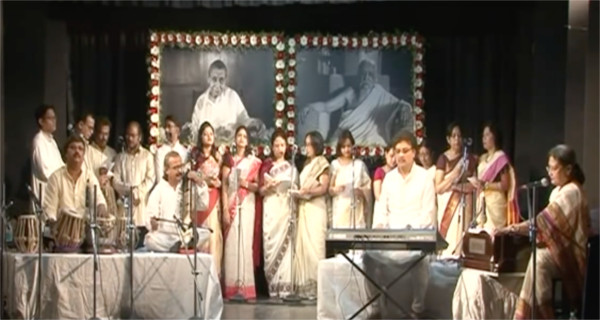
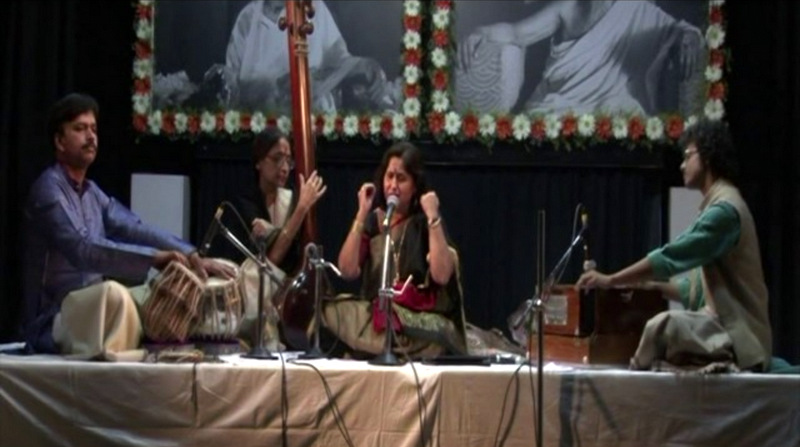
2.Feb.2017: Tribute to Joya di on her 81st Birth Anniversary
Tarun Das on Tabla and Anirban Chakrabarty on Harmonium
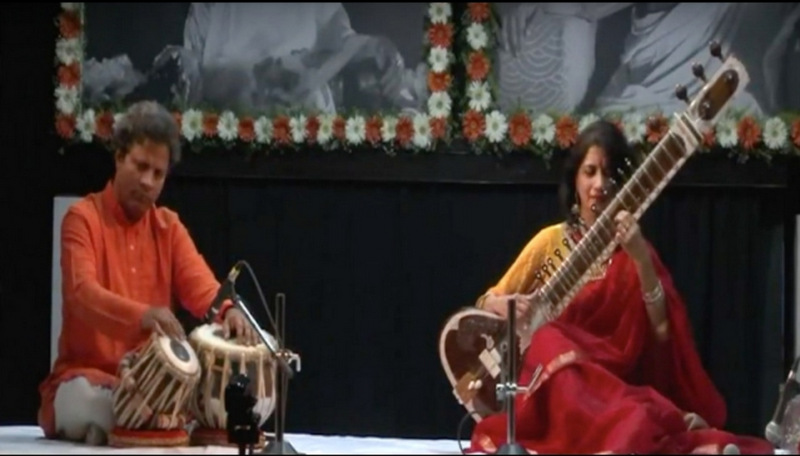
2.Feb.2017: Tribute to Joya di on her 81st Birth Anniversary
Sudhir Gharai on Tabla
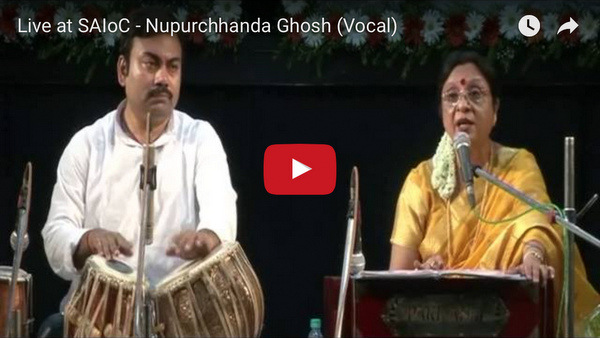
15.Aug.2016: Offering of Patriotic and Devotional songs on Sri Aurobindo's Birthday
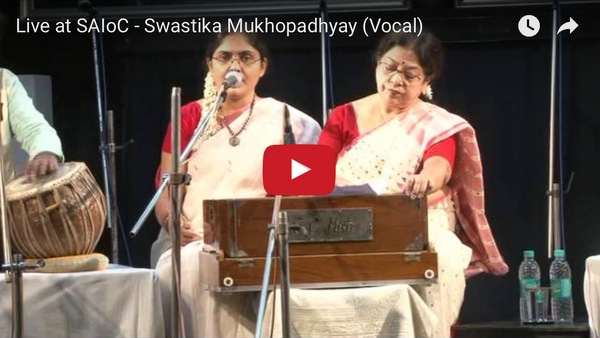
3.Aug.2016: Remembering Atulprasad Sen, Rajanikanto Sen, D. L. Roy and Dilip Kumar Roy
Remembering Atulprasad Sen, Rajanikanto Sen, D. L. Roy and Dilip Kumar Roy
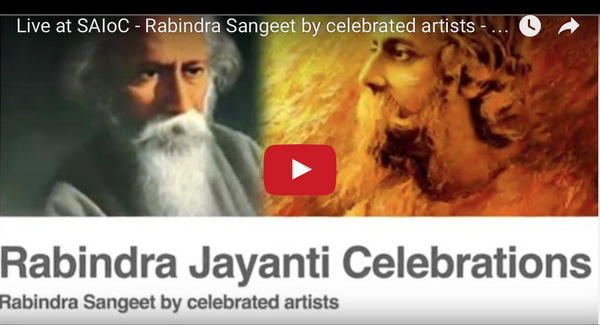
9.May.2016: Musical Tribute to Rabindranath Tagore on his Birth Anniversary by various artists
Sri Aurobindo Institute of Culture celebrated Rabindranath Tagore's 155th Birth Anniversary with an offering of Rabindra Sangeet by celebrated artists. Chorus led by Shri Ashish Bhattacharya and Smt. Pramita Mullick. Solo renditions by Mriganka Sarkar, Shreya Guha Thakurta, Iffat Ara Dewan, Debashish Roy Choudhury, Rohini Roy Choudhury, Biswarup Rudra, Anita Pal, Shamik Pal, Imon Chakraborty...
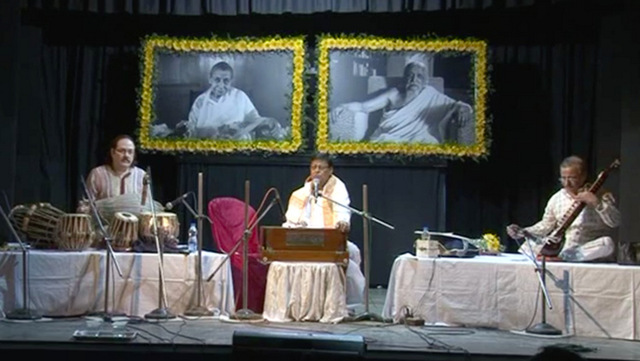
14.Apr.2016: Offering of songs on New Year's Day in the Bengali calendar
Offering of songs to celebrate New Year's Day in the Bengali calendar
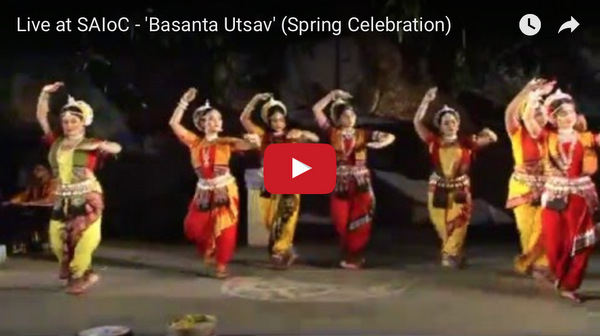
An offering of Music and Dance to celebrate the onset of Spring
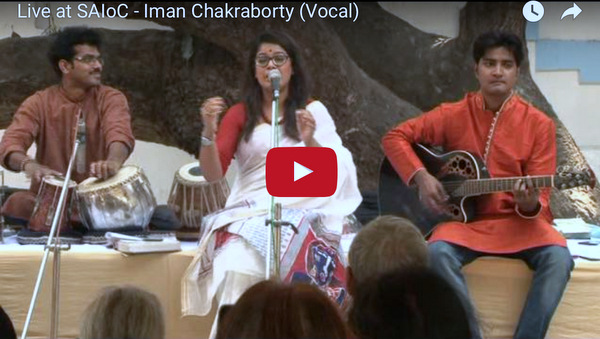
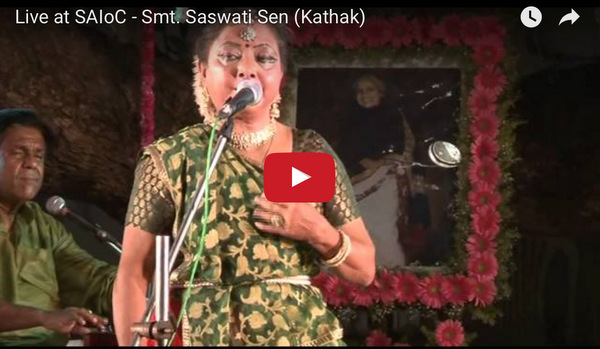
2.Feb.2016: Tribute to Joya di on her 80th Birth Anniversary
The highlight was a brief tabla performance by Pandit Birju Maharaj, who also sang a song he had composed earlier and an emotional performance by Smt Saswati Sen to a song sung by Joya di.
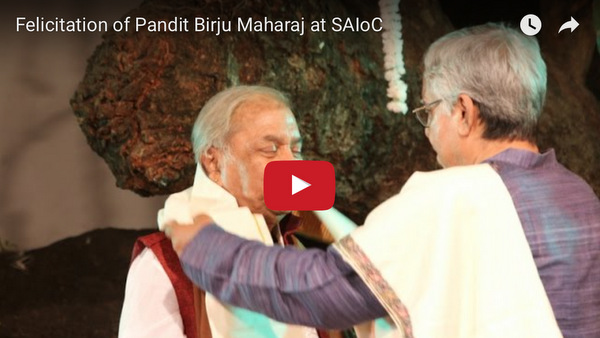
2.Feb.2016: Joya di's 80th Birth Anniversary
The text of the felicitation document was recited in three languages - English, Hindi & Bengali.
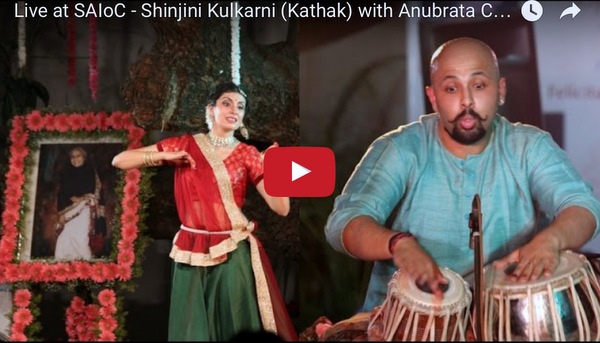
2.Feb.2016: Tribute to Joya di on her 80th Birth Anniversary
A Jugalbandi between Shinjini Kulkarni (Kathak) and Anubrata Chattopadhyay (Tabla)

20.Dec.2015: Musical program at Aspiration 2015 - annual celebration of culture
'Swarna Juger Gaan' - Songs by Aloke Roy Chowdhury

19.Dec.2015: Musical program at Aspiration 2015 - annual celebration of culture
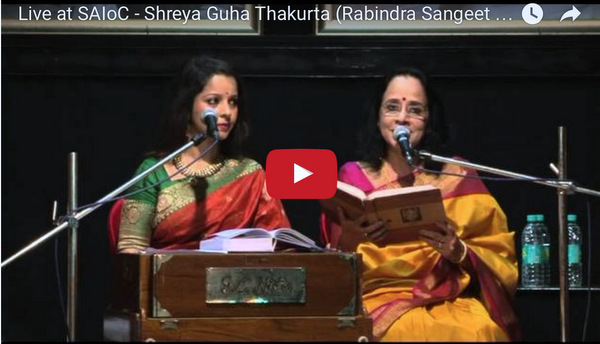
18.Dec.2015: Musical program at Aspiration 2015 - annual celebration of culture
'Giti Alekhyo' - Rabindra Sangeet by Shreya Guha Thakurta with Narration by Saswati Guha Thakurta
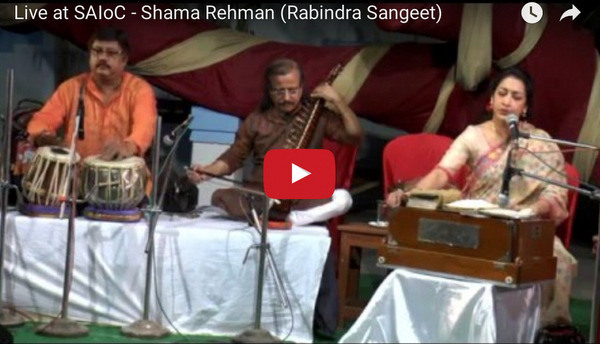
17.Dec.2015: Musical program at Aspiration 2015 - annual celebration of culture
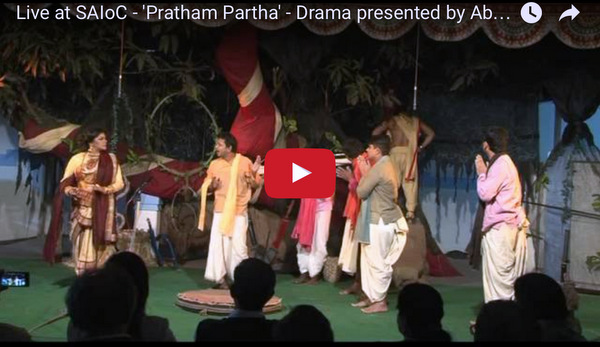
16.Dec.2015: Musical program at Aspiration 2015 - annual celebration of culture
Presented by Abdullah Al-Mamun Theatre School Praktoni (Bangladesh)
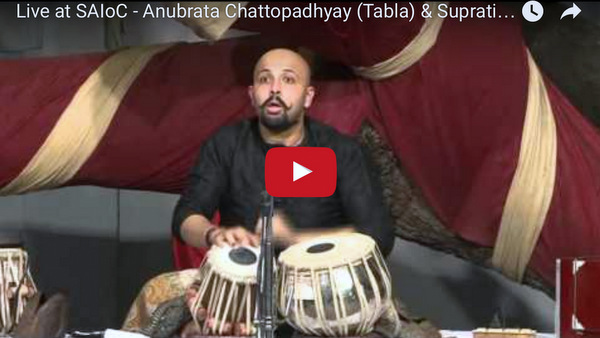
14.Dec.2015: Musical program at Aspiration 2015 - annual celebration of culture
Solo performances and Jugalbandi
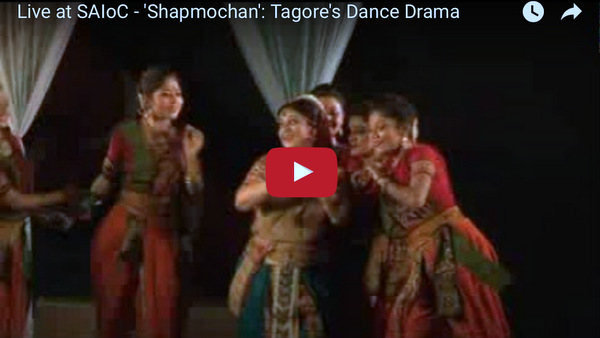
11.Dec.2015: Musical program at Aspiration 2015 - annual celebration of culture
A dance-drama directed by Minu Haque
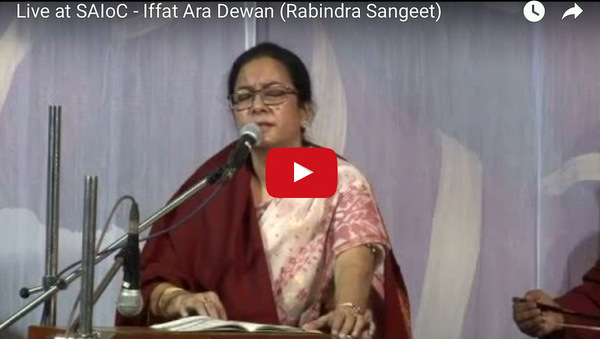
11.Dec.2015: Musical program at Aspiration 2015 - annual celebration of culture
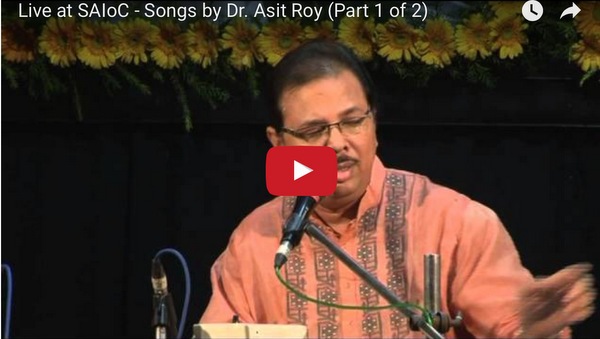
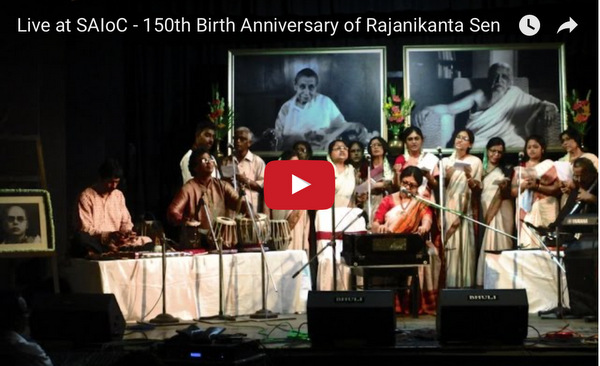
27.Jul.2015: A tribute on the 150th Birth Anniversary of Rajanikanta Sen
A tribute on the 150th Birth Anniversary of Rajanikanta Sen
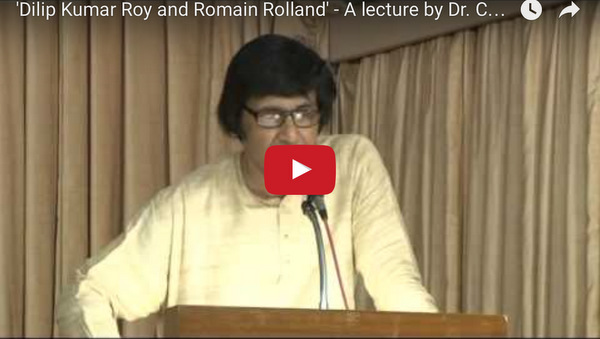
24.Apr.2015: IX Dilip Kumar Roy Memorial lecture
'Dilip Kumar Roy and Romain Rolland' - IX Dilip Kumar Roy Memorial lecture on 24.04.2015 by Dr. Chinmoy Guha, Organised by Sri Aurobindo Institute of Culture and Hari Krishna Mandir Trust, Pune
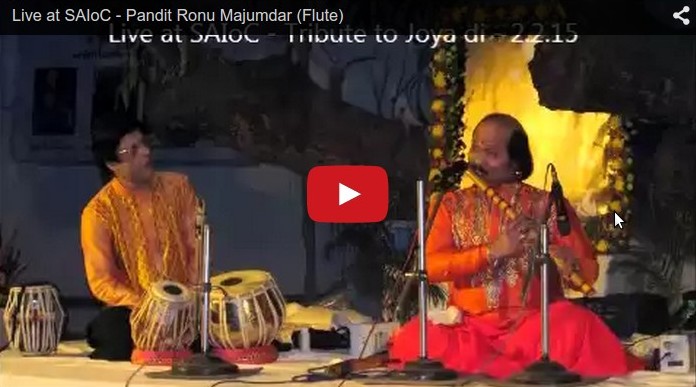
2.Feb.2015: Musical Tribute to Joya di on her 79th Birth Anniversary
Flute recital by Pandit Ronu Majumdar accompanied by Pandit Anindo Chatterjee on the tabla
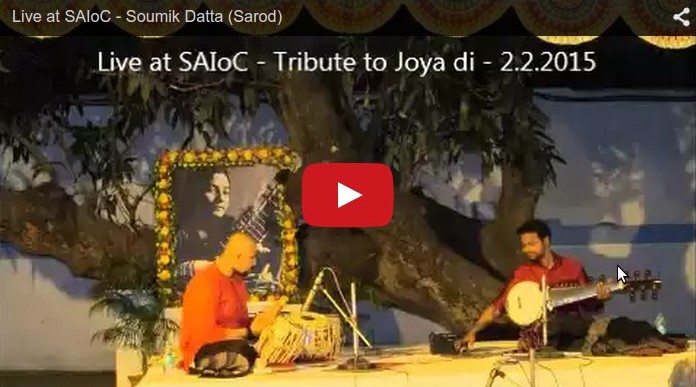
2.Feb.2015: Tribute to Joya di on her 79th Birth Anniversary
Sarod recital by Soumik Datta accompanied by Shri Anubrata Chatterjee on the tabla
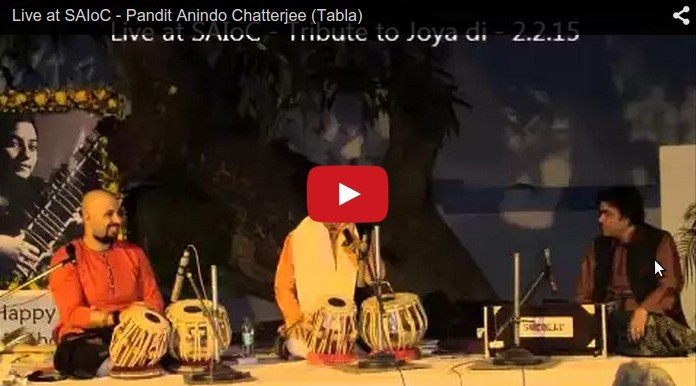
2.Feb.2015: Tribute to Joya di on her 79th Birth Anniversary
Tabla Jugalbandi by Pandit Anindo Chatterjee and Shri Anubrata Chatterjee.
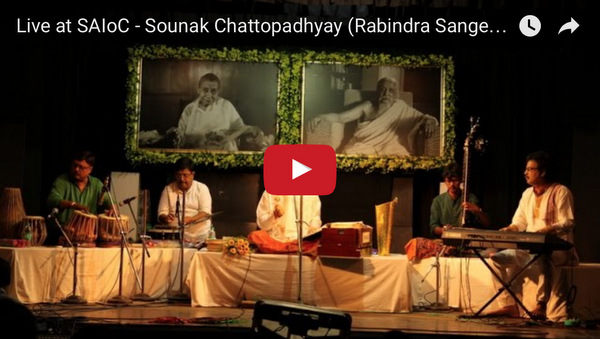
15.Aug.2014: A musical offering on Sri Aurobindo's Birthday
An offering of songs at the Hall of Light
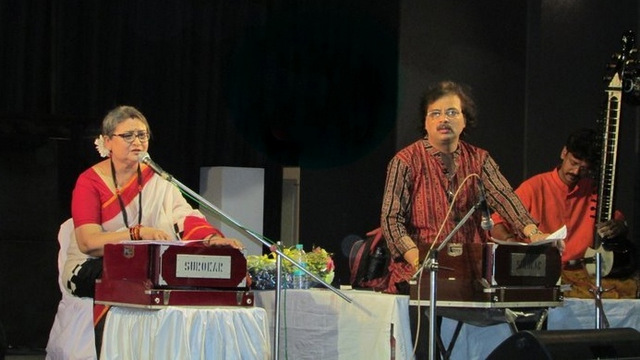
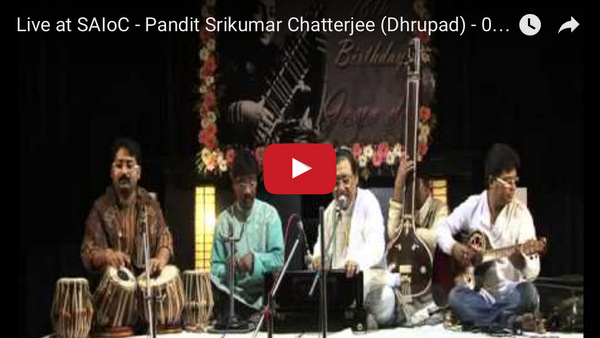
2.Feb.2014: Tribute to Joya di on her 78th Birth Anniversary
Pandit Srikumar Chatterjee's mesmerizing musical tribute to Joya di, punctuated by touching anecdotes and reminiscences.
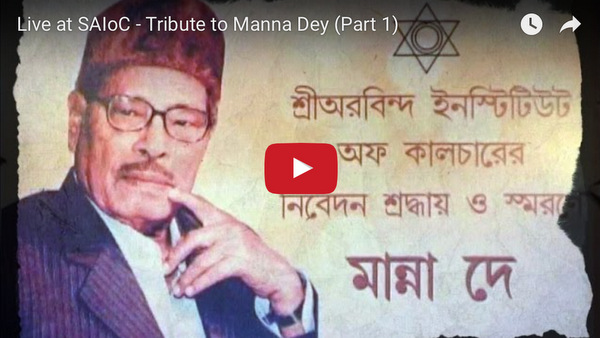
20.Dec.2013: Musical program at Aspiration Dec. 2013 - annual celebration of culture
Tributes to Manna Dey by Tarun Majumder, Haimanti Shukla, Abhijit Bandyopadhyay, S. F. Karim, Pallav Ghosh and Santanu Basu
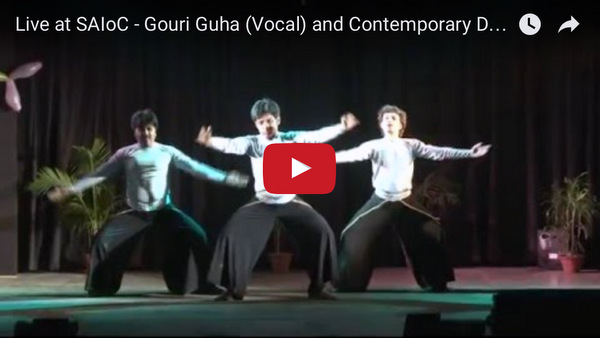
19.Dec.2013: Musical program at Aspiration Dec. 2013 - annual celebration of culture
Vocal recital by Gouri Guha and a Dance programme by Krishti Cultural Centre conducted by Kaustuv Basu
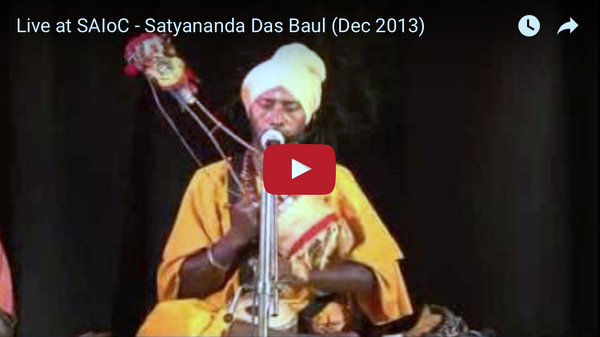
18.Dec.2013: Musical program at Aspiration Dec. 2013 - annual celebration of culture
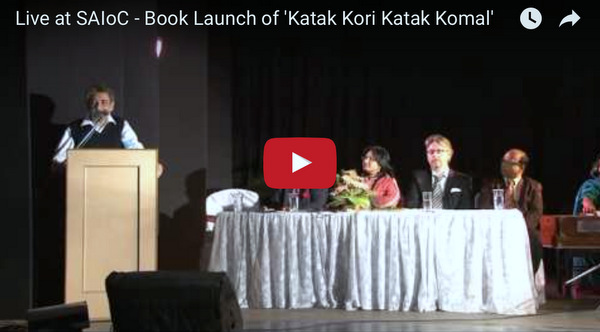
17.Dec.2013: Musical program at Aspiration Dec. 2013 - annual celebration of culture
Book launch of "Katak Kori, Katak Komal" (authored by Prithwindra Mukherjee), Ranjan Mitter's address, Address by the French Consul General - Fabrice Etienne, Address by Abida Islam, Deputy High Commissioner, Bangladesh, Guest of Honour - Stéfane Amalir, Director, Alliance Française du Bengale.
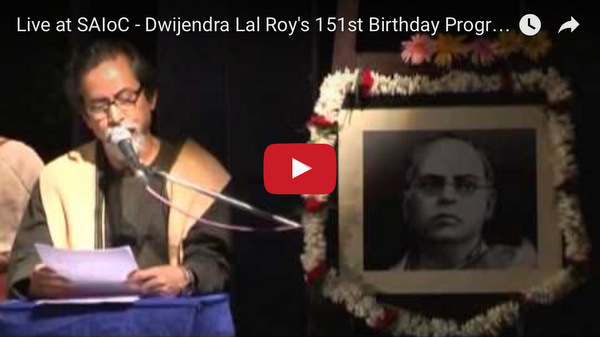
19.Jul.2013: A tribute on the 151st Birth Anniversary of Dwijendra Lal Roy
A tribute on the 151st Birth Anniversary of Dwijendra Lal Roy
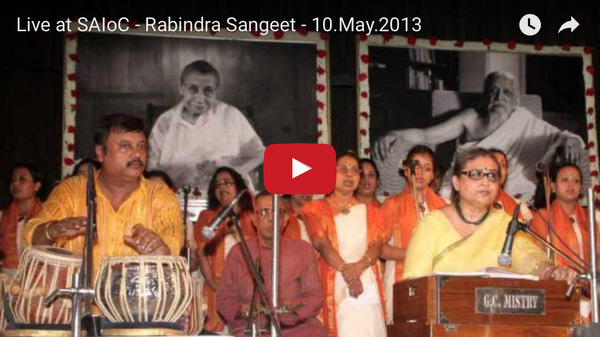
Musical Tribute to Rabindranath Tagore on his Birth Anniversary by various artists
Kobi Pronam (Salutations to the poet). Group songs directed by: Shri Ashish Bhattacharya and Smt. Pramita Mallick
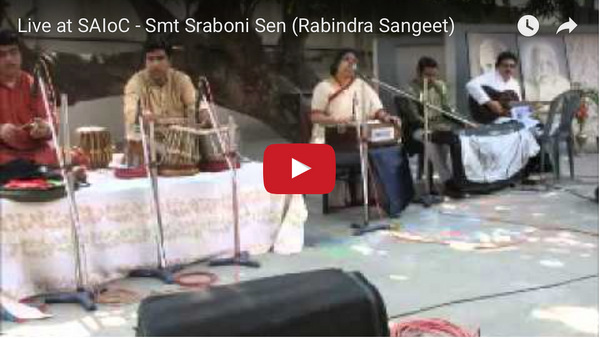
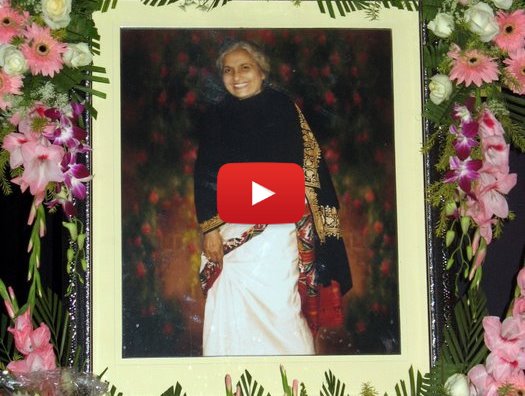
2.Feb.2013: Tribute to Joya di on her 77th Birth Anniversary
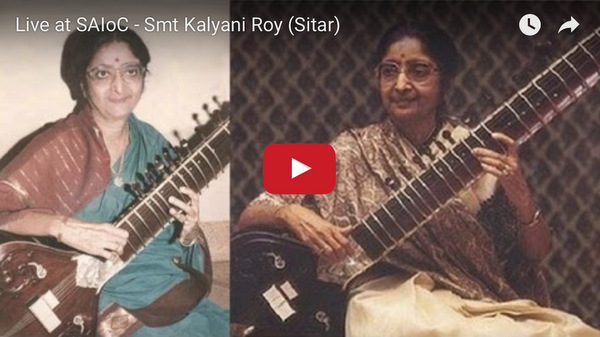
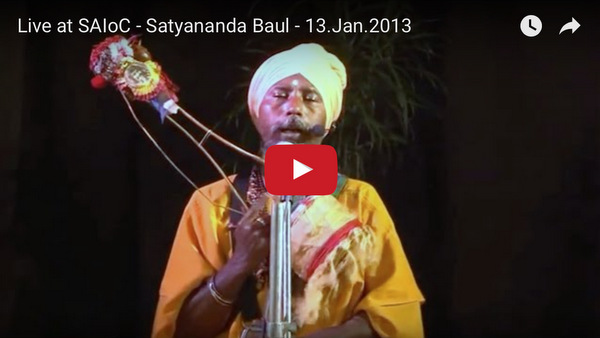
13.Jan.2013: Musical program at Aspiration 2013 - annual celebration of culture
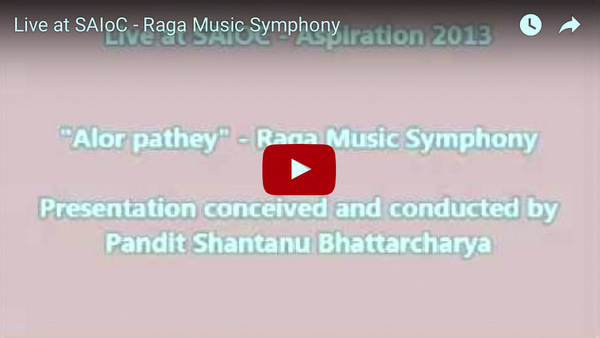
11.Jan.2013: Musical program at Aspiration 2013 - annual celebration of culture
'Aalor Pathe' - A presentation of Raga music symphony.Conceived and conducted by Pandit Shantanu Bhattacharyya.
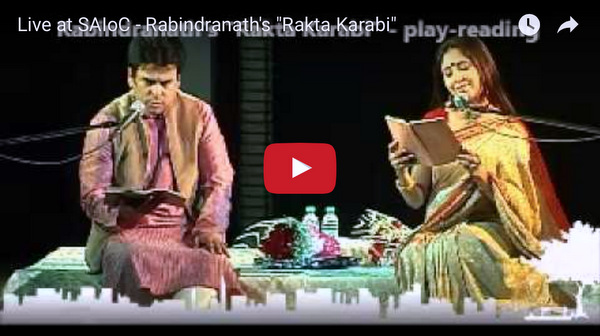
9.Jan.2013: Musical program at Aspiration 2013 - annual celebration of culture
Presented by Smt Chaiti Ghoshal and Shri Debdoot Ghosh
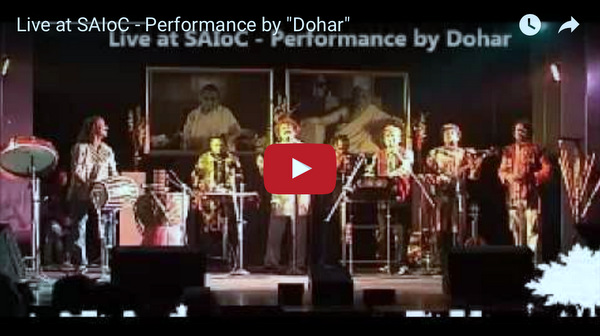
7.Jan.2013: Musical program at Aspiration 2013 - annual celebration of culture
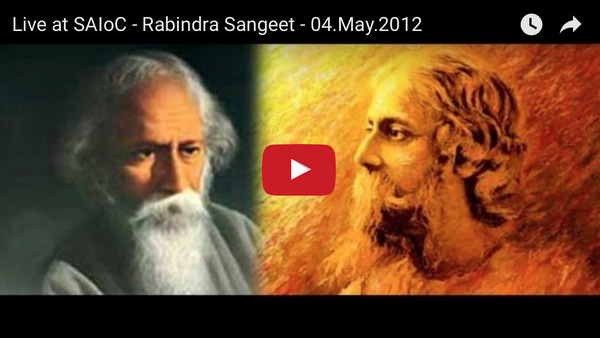
4.May.2012: Musical Tribute to Rabindranath Tagore on his Birth Anniversary
Kobi Pronam (Salutations to the poet)
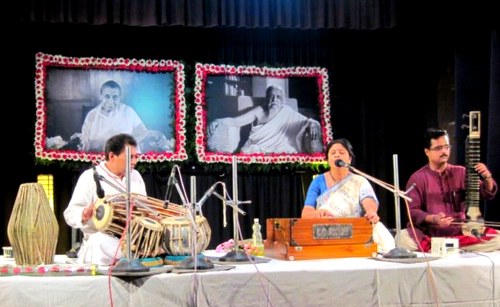
14.Apr.2012: A musical offering on Bengali New Year's Day
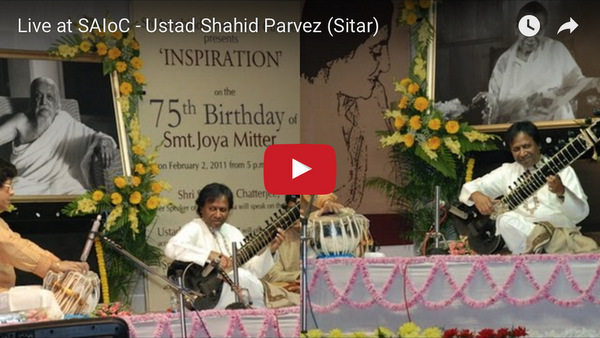
2.Feb.2011: Musical Tribute to Joya di on her 75th Birth Anniversary
Sitar recital by Ustad Shahid Parvez, accompanied by Pandit Anindo Chatterjee on Tabla
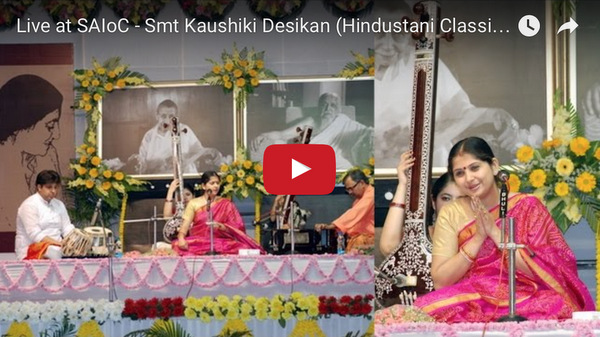
2.Feb.2011: Musical Tribute to Joya di on her 75th Birth Anniversary
Vocal recital by Smt Kaushiki Chakrabarty Desikan accompanied by Shri Anubrato Chatterjee among others
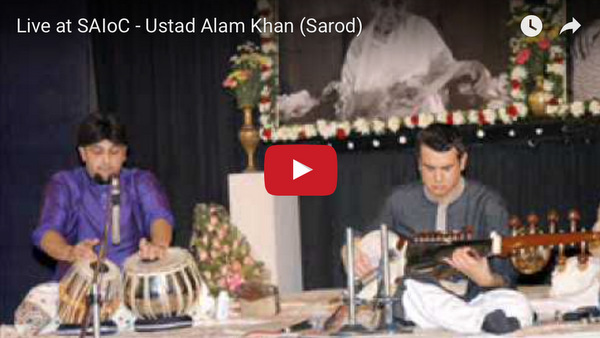
23.Dec.2010: Musical program at Aspiration 2010 - annual celebration of culture
Shri Alam Khan, son of Ustad Ali Akbar Khan and scion of the Senia-Maihar Gharana, presented Raag Marwa and Raag Pilu Barwa. He was accompanied by Shri Anubrata Chatterjee, an alumnus of The Future Foundation School, on the Tabla.
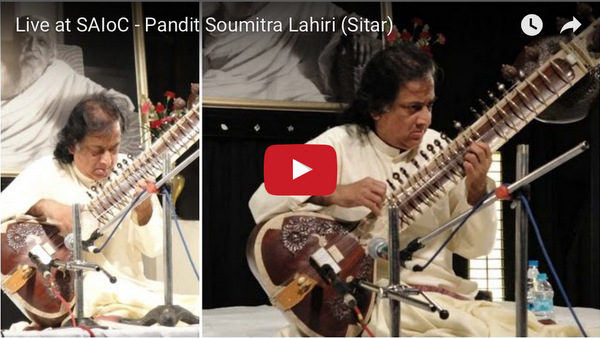
20.Dec.2010: Musical program at Aspiration 2010 - annual celebration of culture
Pandit Soumitra Lahiri, disciple of legendary Pandit Manilal Nag and representing the Bishnupur Gharana, presented Raag Maru Bihag. He was accompanied by Shri Subhankar Banerjee on the Tabla.
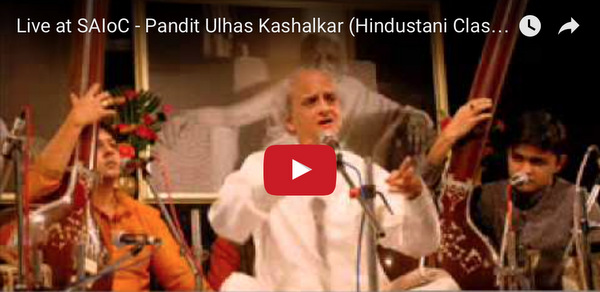
20.Dec.2010: Musical program at Aspiration 2010 - annual celebration of culture
Pandit Ulhas Kashalkar combined the nuances of Gwalior, Agra and Jaipur Gharanas in his recital of Raag Lalita Gauri, Raag Chayanat and Raga Basanta. The accompaniments included vocals by Omkar Dadarkar and Sameehan Kashalkar, his son, who also happens to be an alumnus of The Future Foundation School, Shri Jyoti Goho on the Harmonium and Shri Subhankar Banerjee on the Tabla.
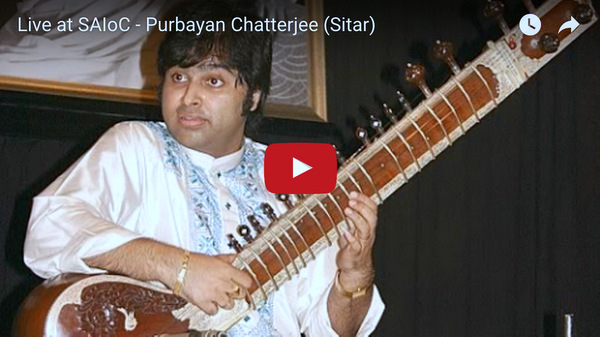
Musical program at Aspiration 2008 - annual celebration of culture
Pt. Abhijit Bandopadhyay accompanied on Tabla
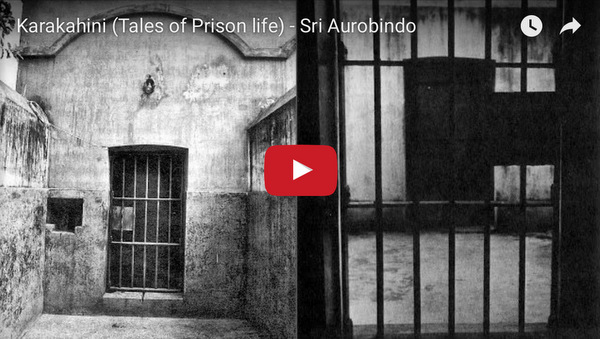
2.Feb.2008: Tribute to Joya di on her 72nd Birth Anniversary
Shri Supriti Mukhopadhyay's evocative reading of the original Bengali version of 'Karakahini' - Sri Aurobindo's account of his life as an under-trial prisoner.
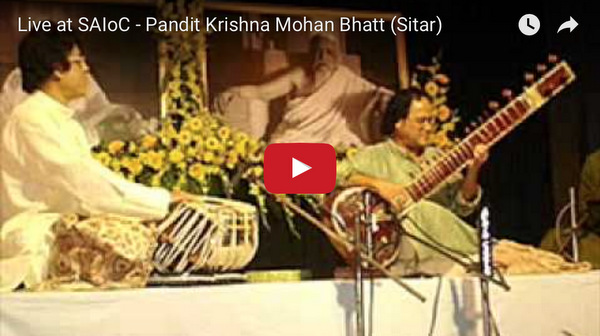
2.Feb.2007: Musical Tribute to Joya di on her 71st Birth Anniversary
Sitar Recital by Pandit Krishna Mohan Bhatt, Pandit Anindo Chatterjee on Tabla
Reading from Sri Aurobindo's Play - 'Perseus the Deliverer' in Bengali by Shri Supriti Mukhopadhyay
Santoor Recital by Pandit Tarun Bhattacharya
Thematic Programme on different tunes of Bande Mataram
Thematic Programme with songs of Atulprasad Sen, Rajanikanto Sen, Dwijendralal Roy & Dilip Kumar Roy
Baul songs by Shri Satyananda Baul
Dhrupad Recital by Pandit Falguni Mitra
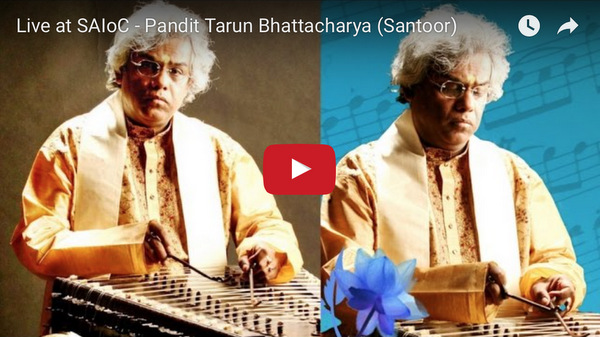
4.Jan.2007: Musical program at Aspiration 2007 - annual celebration of culture
Tabla by Shri Subrata Bhattacharya
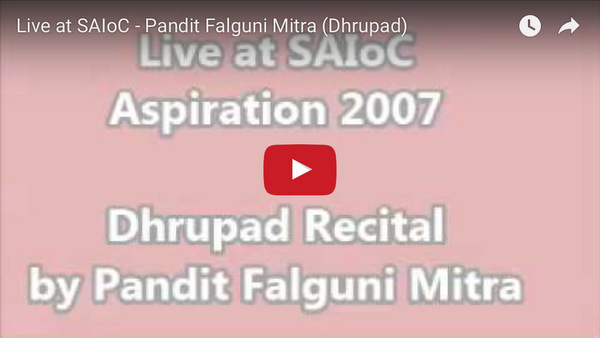
31.Dec.2006: Musical program at Aspiration 2007 - annual celebration of culture
Inauguration by Shri Somnath Chatterjee, Speaker of the Lok Sabha
Sarod recital by Shri Anirban Dasgupta
Vocal recital by Shri Aloke Chattopadhyay
Sitar recital by Shri Purbayan Chattopadhyay
Vocal recital by Shri Aniruddha Bhattacharya
Vocal recital by Smt Sruti Sadolikar
Inauguration by Smt Suchitra Mitra, Shri Prabhakar Rao (Batti da)
Kathak performance by Smt. Molly Roy
Baul song by Satyananda Baul
Vocal recital by Pandit Arun Bhaduri
Sarod recital by Shri Partho Sarathi
Sitar recital by Pandit Manilal Nag
Vocal recital by Shri Arshad Ali Khan
Vocal recital by Shri Sandipan Samajpati
Nagaland was the theme
Folk dance by the Naga Troupe
Vocal Recital by Pandit Manas Chakraborty
Recital by Smt. Bratati Bandopadhyay and dance by Smt. Alokananda Roy
Baul songs by Shri Satyananda Baul
Dance recitals by Bivabati Devi, Anasua Bandopadhyay and Asimbandhu Ghose
Exhibition of Sri Aurobindo Ashram Products and handicrafts from West Bengal